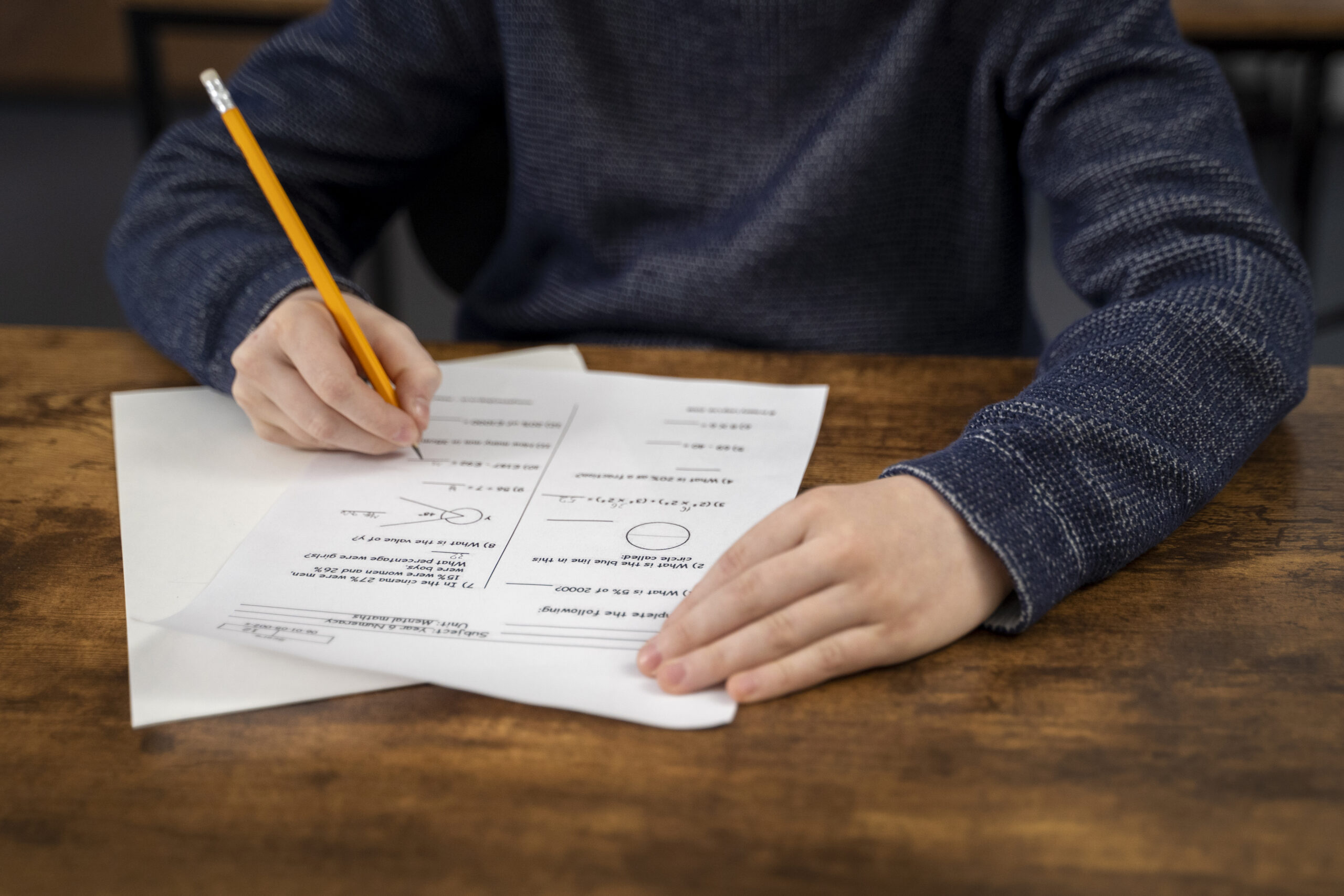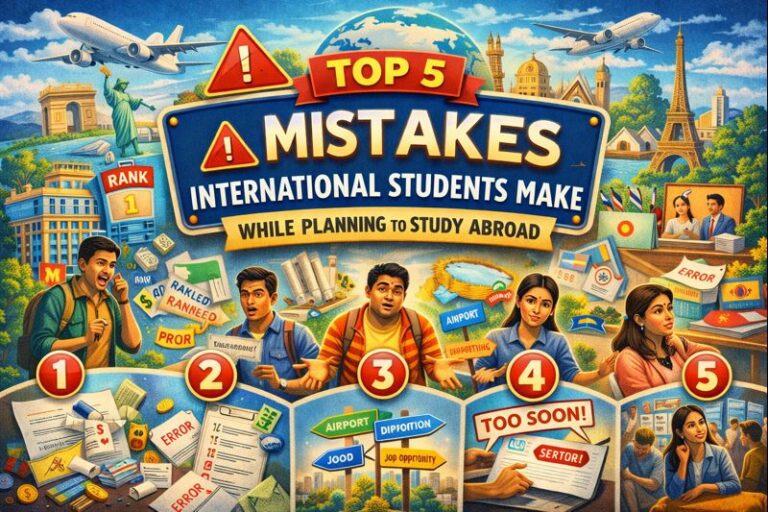What is a Backlog Certificate?
A backlog certificate is a document that attests to the number of backlogs you have till date cleared and uncleared.
In other words, it shows records of any exams that you have not passed in the first attempt.
To universities abroad, it serves as a supporting document for an academic transcript that is given out by your university or school.
Some colleges abroad might ask you for a no- backlog certificate to attest that you have no backlogs.

What are the different types of backlog certificates?
There are four main kinds of backlog certificates that universities/ colleges issue. These are as under:
|
Type of Backlog Certificate |
Description |
|
Semester-Wise Certificate |
Lists backlogs semester by semester, detailing specific subjects failed and cleared in each semester. Ideal for tracking academic performance per term. |
|
Subject-Wise Certificate |
Focuses on specific subjects with backlogs, regardless of the semester. This type lists all subjects where the student faced backlogs. |
|
Cumulative Certificate |
Provides a comprehensive summary of all backlogs across the entire course duration, often requested by universities during admissions. |
|
Attempt-Wise Certificate |
Highlights the number of attempts made to clear each subject. Often used by universities in countries where the number of attempts matters, such as Australia and Germany. |
Depending on the requirements laid out for your application, you may need one or more of the types listed above.
In the next section, we’ll outline the differences between backlog certificates and grade transcripts.
Also Read: Study Abroad Guide for Indian Students
What is the Difference between a Backlog Certificate and a Transcript?
Here is a table outlining the main differences between a backlog certificate and a grade transcript:
|
Criteria |
Backlog Certificate |
Transcript |
|
Purpose |
Certifies the number of backlogs and attempts made to clear them. |
Provides a complete academic record, including all courses and grades. |
|
Content |
Lists only subjects where backlogs occurred, with details of attempts and status. |
Lists all courses taken, grades received, credit hours, and overall GPA. |
|
Issuing Authority |
Issued by the university’s examination department upon request. |
Typically issued by the university as part of standard documentation. |
|
Use Case |
Mainly required for university applications abroad to assess academic performance. |
Used for a wide range of applications, including job applications and academic transfers. |
|
Format |
The backlog certificate format focuses on specifics such as subject names and attempts made to pass that subject. |
The transcript certificate format is more general in comparison, covering all subjects and results. Usually, transcripts only take the best result of all attempts made in all subjects. |
Next, we’ll learn about why backlog certificates are important for studying.
Why is a Backlog Certificate Important for Studying Abroad?
A backlog certificate must be submitted with other application-supporting materials such as academic transcripts, LORs, SOPs, test results, your CV, etc.
Here is why you need it for studying abroad.
- Most universities abroad do not accept students with active backlogs. This is especially true of STEM programs, which require all modules at the undergraduate level to have been cleared before admission to graduate programs.
- Your academic history and the status of your backlogs are verified by a backlog certificate.
- Clarifying the procedure for calculating backlogs is also helpful. The number of subjects is used by universities in the US, UK, and Canada to calculate backlogs. So, Number of Attempts ≠ Number of Backlogs. The number of attempts and backlogs are equal in Australia and Germany. So, if you had to re-attend the exam four times, the number of backlogs will also be counted as four. Number of Attempts = Number of Backlogs
- A backlog certificate aids universities in a fair assessment of a student’s academic progress.
- Certain universities may require a backlog certificate even if you have no backlogs. This is a common practice in the USA, Canada, and Australia. Here, a no-backlog certificate may even be part of mandatory admission requirements.
In the following section we’ll discuss who needs a backlog certificate.
Who needs a backlog certificate?
These are the five different categories of students who need to submit an application for a backlog certificate:
- Students with Backlogs: If you failed subjects and later cleared them, you need a backlog certificate for university applications abroad.
- Applicants to Specific Universities: Some universities require a backlog certificate, especially those that accept students with a limited number of backlogs.
- Students Applying for Competitive Programs: For competitive programs, universities want full transparency of your academic record, including backlogs.
- Students with No Backlogs: Certain universities may ask for a ‘no-backlog certificate’ to confirm you passed all subjects on the first attempt.
- Applicants for Scholarships or Visas: Some scholarships and visa applications require proof of your academic history, including backlogs.
In the section below, we’ll learn about the uses of a backlog certificate.
Also Read: Stages Of Education Loan For Study Abroad
How to use a backlog certificate?
Aside from the obvious use case, here are three ways you can use a backlog certificate (even with backlogs) to your advantage:
- Instead of focusing on the backlogs, highlight how you overcame challenges. Pair your backlog certificate with a strong statement in your SOP (Statement of Purpose) that emphasizes resilience and growth. For instance, explain how the experience taught you time management, discipline, or how you turned weaknesses into strengths. This approach demonstrates perseverance, a valuable trait for future academic success.
- If you worked while clearing backlogs, use the certificate as proof that you successfully balanced your studies and work. This narrative shows that you can manage multiple responsibilities, a skill that universities and employers highly value. Mentioning this in your application gives a positive spin, positioning you as someone who thrives under pressure.
- Some universities might offer conditional admission based on clearing specific backlogs. If you’ve already met these conditions, the backlog certificate becomes proof of your determination. Similarly, some scholarships look for candidates who have shown improvement over time. You can use the certificate as evidence that you are a hard worker who steadily improved, making you a strong candidate.
Next, we’ll learn about the backlog certificate application procedure.
Procedure to Obtain Backlog Certificate
The next question is, ‘How to get a backlog certificate?’
Simply put, you must submit a backlog certificate application to the university you graduated from.
To minimize any delays, make sure you provide accurate information while completing the backlog certificate application.
The majority of Indian universities give students backlog certificates and are aware of this criterion for admission to foreign universities. To get a backlog certificate or even a no-backlog certificate from the university, you need to submit a formal application.

In rare cases, the college might not know about this process. Hence, you may encounter difficulties in receiving your certificates.
In that case, contact the university where you are applying and ask them to send a letter requesting a backlog/no-backlog certificate from your university. This issue generally occurs when there are zero backlog certificates.
If you are still in doubt, get in touch with peers and alumni and understand how they received their certificates. Try reaching out to them through offline mediums. If that doesn’t work, you can always go online. It’s simpler.
Log into SelectRight. The platform can connect you with mentors who can provide valuable guidance. These mentors are either alumni or current students of the university you want to attend.

Backlog Application Format
You can find the backlog certificate application on your college’s website. Fill it out and send it to the appropriate authorities.
Here is an example of a backlog application format.
Application for Backlog Certificate
The Principal/ Dean
Name of University
Address of the University
Subject: Application for Backlog Certificate
Respected Sir/ Madam,
I am _____ (Name), s/o or d/o of _____ (Father’s Name), Roll No. ______, student of _____ (course name with batch) at your university. This is an application to request you to issue my backlog certificate as I require it for applying to a master’s degree. The details of my backlogs are mentioned in the table below:
(In this section, you have to fill in details with respect to the program for which the Backlog Summary Certificate is requested. Mention all the courses which were not cleared in a single attempt.)
|
Semester |
Expected Year of Passing |
Year of Passing |
Number of Backlogs |
Number of Attempts |
Subject Reappears |
|
Semester I |
|||||
|
Semester II |
|||||
|
Semester III |
|||||
|
Semester IV |
|||||
|
Semester V |
|||||
|
Semester VI |
Please issue my backlog certificate at the earliest possible. Thank you for your time and consideration.
Yours Sincerely,
(Name)
No Backlog Application Format
A No Backlog Application follows a similar format, but you don’t have to mention the details of your backlogs or add ‘nil’ in the places.
The Principal/ Dean
Name of University
Address of the University
Subject: Application for no-backlog certificate
Respected Sir/ Madam,
I am _____ (Name), s/o or d/o of _____ (Father’s Name), Roll No. ______, student of _____ (course name with batch) at your university. This is an application to request you to issue my zero backlog certificate as I require it for applying to a master’s degree. I have cleared my bachelor’s degree with zero backlogs in any semester and therefore ask you to issue a certificate verifying the same.
Please issue my backlog certificate at the earliest possible. Thank you for your time and consideration.
Yours Sincerely,
(Name)
Backlog Certificate Format
The backlog certificate format is straightforward and mainly contains information about the student, the institution, the course, and specifics about the courses and the total amount of backlogs.
Name of the University
Backlog Certificate
This is to certify that _____ (Name), s/o or d/o of _____ (Father’s Name), Roll No. ______, is a student of _____ (course name with batch) at _____ (University Name).
The student has successfully completed his/ her Bachelor of _____ . The backlog summary record is as follows:
This certificate has been issued on the request of the student and the information contained herein is verified.
________
(Signature of the Principal/ Dean)
No-backlog Certificate Sample
Name of the University
Backlog Certificate
This is to certify that _____ (Name), s/o or d/o of _____ (Father’s Name), Roll No. ______, is a student of _____ (course name with batch) at _____ (University Name). The student has successfully completed his/ her Bachelor of _____ with no backlogs in the 1st to 6th semesters.
This certificate has been issued on the request of the student and the information contained herein is verified.
________
(Signature of the Principal/ Dean)
You will also have to sign an acknowledgement which will look like this.
Once you’ve obtained your backlog certificate, you’re ready to complete your application process. The next step is comparing education loan options.
With tuition fees, living expenses, and visa costs piling up, getting the best deal on a student loan is crucial. This is where FundRight comes in.
FundRight simplifies the loan search by connecting you with over 15 top lenders, including public banks, private banks, and NBFCs. With just one profile, you can receive multiple competitive loan offers, allowing you to choose the one that best suits your financial needs.
Here’s how FundRight works:
- Sign up on FundRight and create your profile by entering all necessary academic and financial details.
- Within just 2 days, receive competitive loan offers from a range of lenders.
- Use the platform’s tools and financial advisors to compare offers and select the best one.
- Upload your documents securely through FundRight, avoiding the hassle of multiple submissions.
- Get your loan approved in as little as 10 days, ensuring you’re ready to fund your studies without stress.
Start your education loan journey with FundRight today and secure the best possible deal for your studies abroad.
Also Read: How to Secure an Education Loan for Study Abroad?
Top Universities and Number of Backlogs Accepted
|
University |
Backlogs Accepted |
Location (City, State) |
|
Golden State University |
10-15 |
San Francisco, California |
|
Wichita State University |
Up to 5 |
Wichita, Kansas |
|
Old Dominion University |
10-15 |
Norfolk, Virginia |
|
Pace University |
5-10 |
New York City, New York |
|
Illinois Institute of Technology |
5-10 |
Chicago, Illinois |
|
Florida Institute of Technology |
Up to 8 |
Melbourne, Florida |
|
Clarkson University |
Up to 5 |
Potsdam, New York |
|
Pittsburg State University |
10-15 |
Pittsburg, Kansas |
|
Midwestern State University |
Up to 8 |
Wichita Falls, Texas |
|
University of South Dakota |
5-10 |
Vermillion, South Dakota |
|
Marist College |
Up to 5 |
Poughkeepsie, New York |
|
Missouri State University |
5-10 |
Springfield, Missouri |
|
Kent State University |
Up to 5 |
Kent, Ohio |
|
Murray State University |
Up to 8 |
Murray, Kentucky |
|
Gannon University |
Up to 5 |
Erie, Pennsylvania |
|
California State University, San Bernardino |
5-10 |
San Bernardino, California |
|
Rowan University |
10-15 |
Glassboro, New Jersey |
Also Read: MS in USA with Backlogs: Best US Universities Accepting Backlogs for MS
Frequently Asked Questions about Backlog Certificates
1. Do all colleges abroad ask for a backlog certificate?
Not all colleges require a certificate of backlog. The most prestigious colleges typically seek out applicants with a strong academic background.
Since your academic transcripts will show that you have no backlogs, the majority of universities do not require a no-backlog certificate. The no-backlog certificate is typically common in universities in Australia and New Zealand.
2. What should I do if I have backlogs?
Some colleges will not accept students with backlogs. However, students with backlogs may be chosen by universities that give standardized test scores a lot of weight. Your test results must be higher than the requirements of the university for that.
Make sure you do extensive research on colleges that accept students with backlogs. Universities may set a limit on the total number of backlogs when requesting a backlog certificate. When applying, you must pay close attention to these points.
Focus on eligibility tests, extracurricular activities, and social work, to make up for your backlogs.
If you have backlogs due to Covid-19, get in touch with your admissions office. Many colleges have waived off the no-backlogs rule for the pandemic batches.
3. How do I find universities that accept students with backlogs?
Take the help of online platforms. For example, SelectRight uses 6 million data points across 10,000+ STEM, CS & MBA programs to give you transparent and unbiased recommendations.
All you have to do is create an account and add your requirements.
4. Do German Universities Accept Backlogs?
Although the majority of prestigious colleges in Germany favor applicants without backlogs, many of them accept them.
Most German colleges that accept backlogs will accept up to five backlogs. However, applications with more than five backlogs are only approved at the admissions offices’ discretion. Also, the majority of German universities only accept students with a maximum of 10 backlogs.
5. Do UK universities accept backlogs?
For this, they must have a strong GRE score, an IELTS score of at least 6.0 and a good academic profile.
Note – Even if your GRE or IELTS scores are great, getting into the top universities with backlogs is hard.
6. Do backlogs affect student visa approval?
No. Backlogs do not directly affect your chances of getting a student visa. Student visa approval mainly depends on getting accepted by a university.
Since chances of getting accepted come down because of backlogs, it indirectly affects student visa approval.















